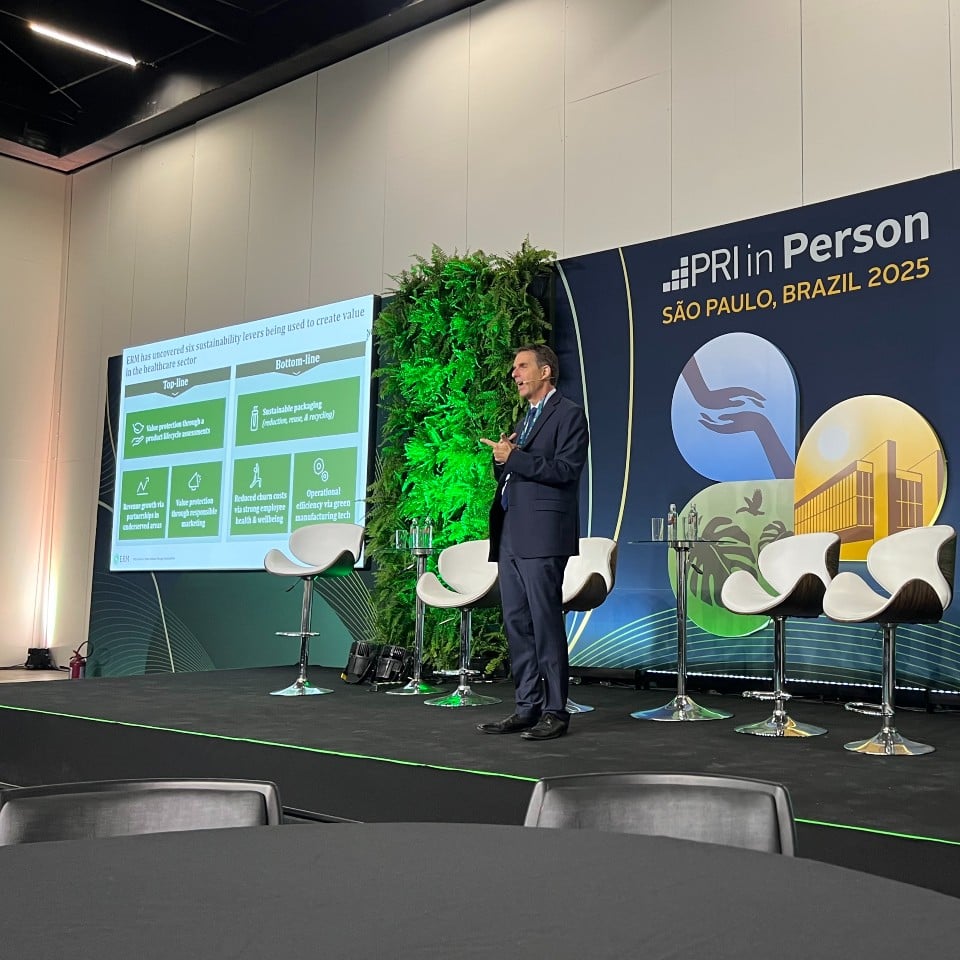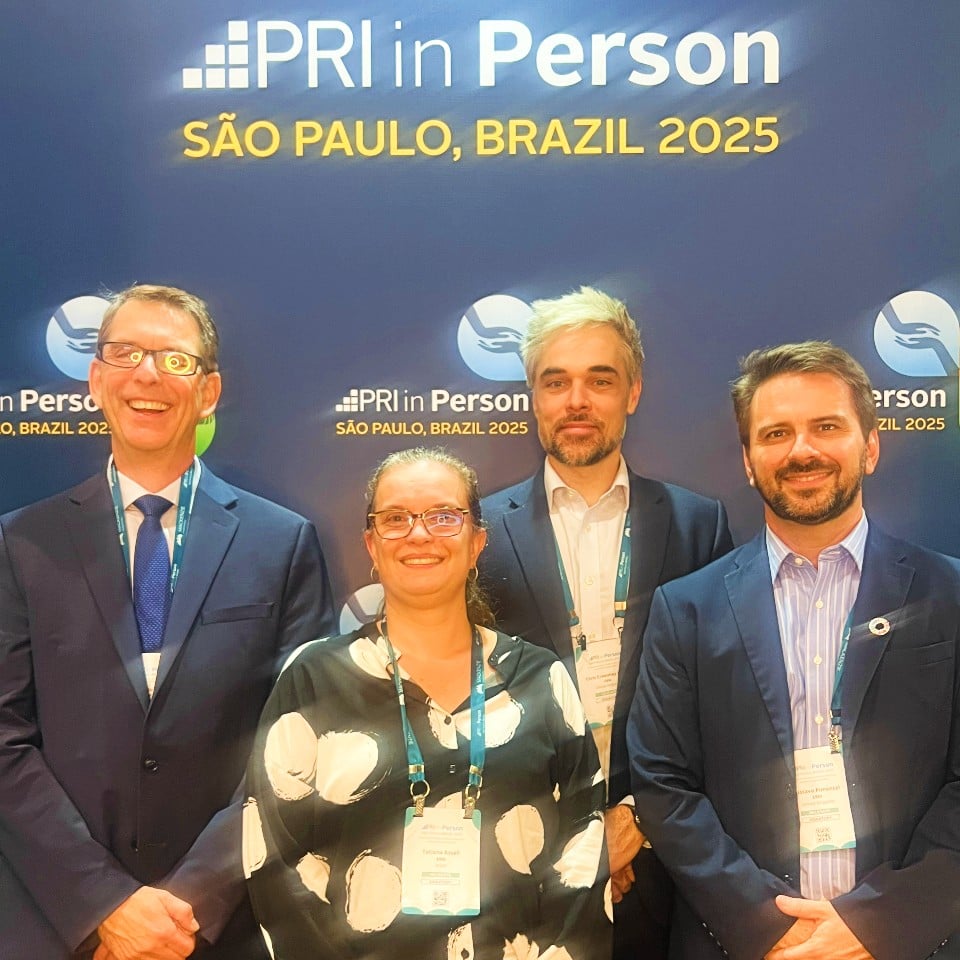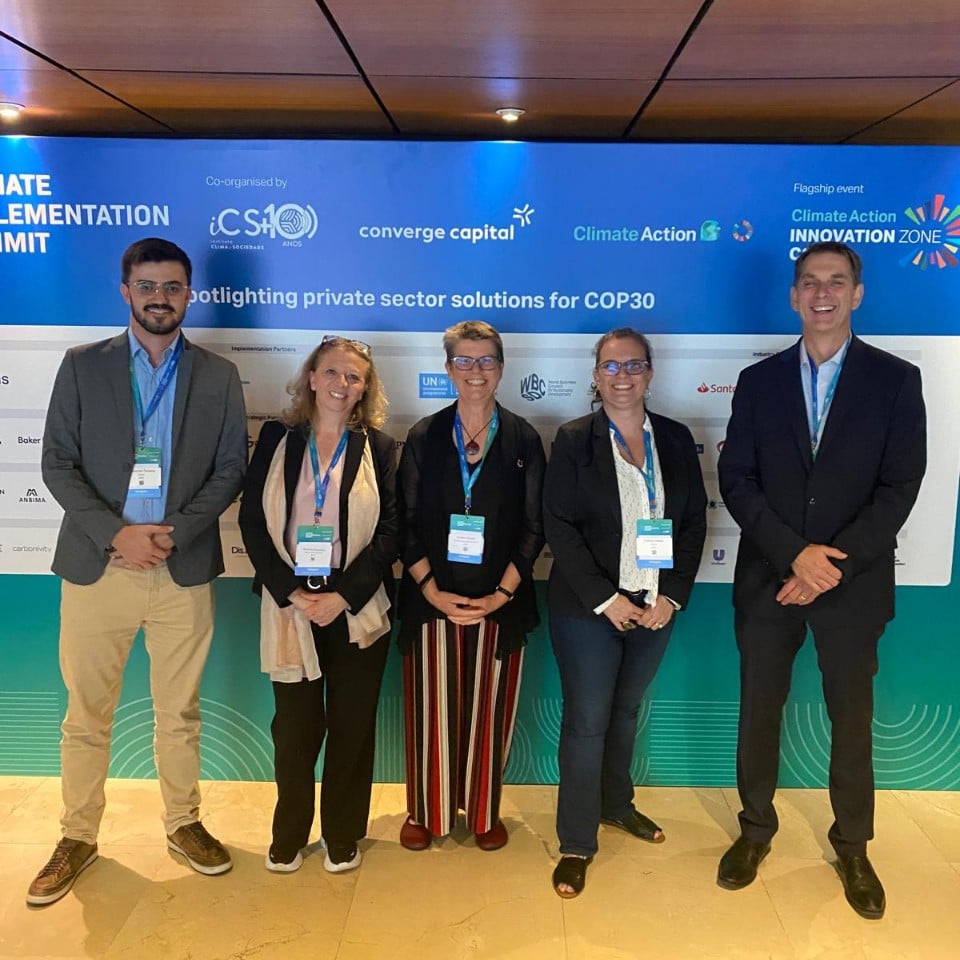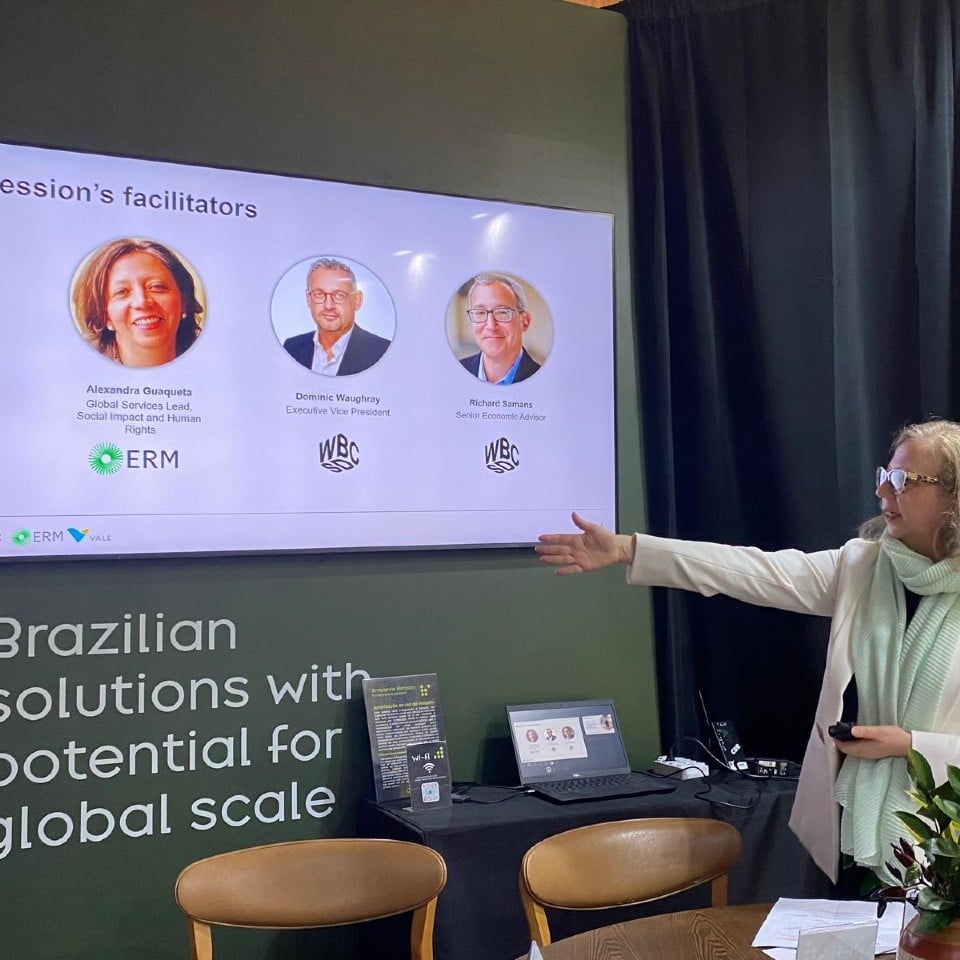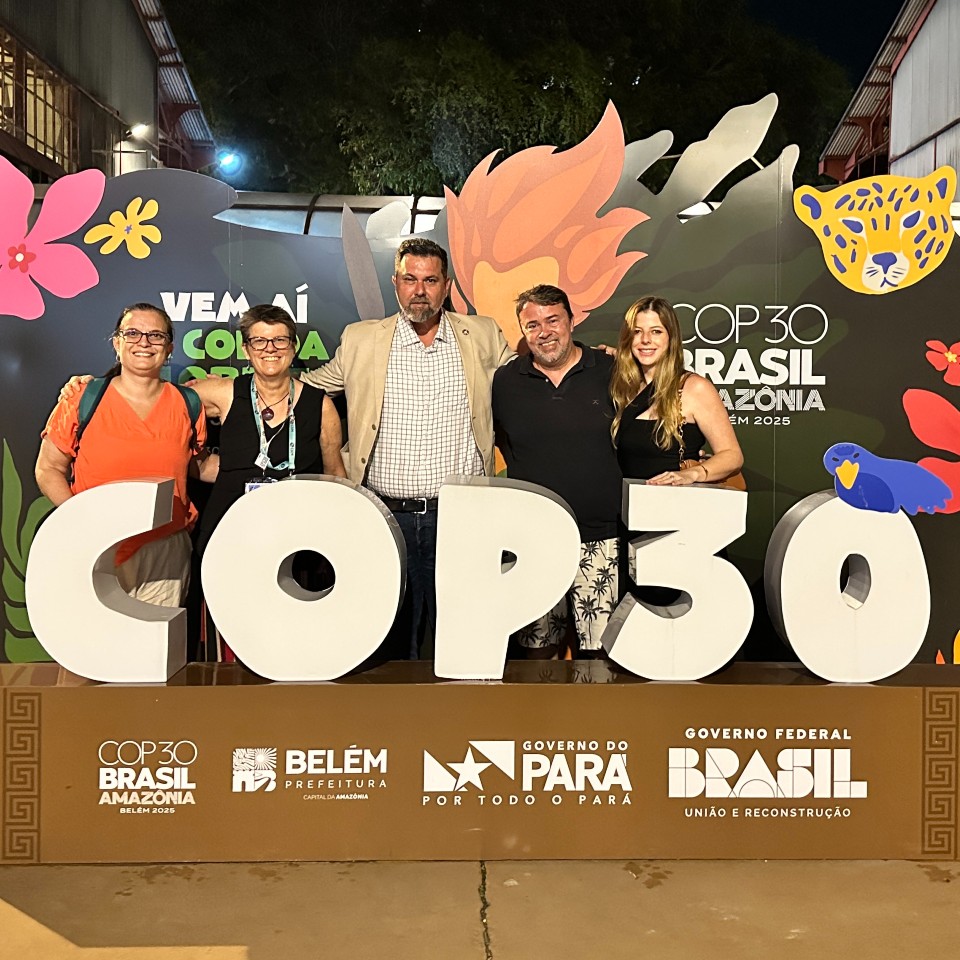
COP30 has concluded in Belém, Brazil. While the summit produced mixed outcomes and reflected the geopolitical realities of the moment, it was nonetheless important for business and finance. It reinforced a clear trend that has defined this year: staying the course on sustainability—while sharpening the focus on its link with commercial value—is proving essential to competitiveness.
The summit closed with the Global Mutirão decision, calling for stronger national emissions targets and a tripling of climate adaptation finance by 2035. Yet, to the disappointment of many delegations, the final text omitted language on phasing down fossil fuels. As a compromise, host’s Brazil committed to advancing two key roadmap initiatives over the next year—one on transitioning away from fossil fuels and one on deforestation—that could shape the agenda heading into COP31.
For business, COP30 reaffirmed the importance of implementation and pragmatic solutions. Companies, investors, and innovators engaged at scale, with collaboration, competitiveness, and economic value creation at the center of discussions on how to turn commitments into delivery.
What follows are the five main takeaways for business with a summary of the most important developments and highlights of what companies can expect as the world turns toward COP31 in Antalya, Türkiye.
1. COP30 underlines a shift to implementation for both national governments and businesses
The Belém summit emphasized the delivery of practical roadmaps and clear guidance, prioritizing smaller, targeted initiatives led by coalitions of countries and non-state actors.
For businesses, this shift reinforces the importance of turning ambition into measurable outcomes and ensuring sustainability programs deliver commercial value. ERM helps companies put tangible business value at the core of decarbonization. For example, our work with clients across their industrial heat applications and vehicle fleets highlights how the energy transition can help deliver value by reducing operating costs, protecting against energy market volatility, and enhancing brand reputation.
Key developments:
- There were hopes at the summit that countries would finalize a Transition Away from Fossil Fuels Roadmap (TAFF). Although delegations did not ultimately reach agreement, the negotiations reinforced a clear message: practical, economically grounded guidance is urgently needed to help governments and businesses turn major climate commitments into real-world progress that delivers both societal and business value. As a compromise, Brazil offered to work on a roadmap outside of the formal UN process that would inform COP31 negotiations.
- There has also been an increasing focus on implementation in NDCs. The UNFCC’s 2025 NDC Synthesis Report noted progress on countries providing more sector-level actions, domestic policy measures, and costed elements of their climate strategies.
- While several countries presented their NDC Investment Plans, there is still some way to go to make NDCs more “bankable” for business. Companies see investable NDCs as an important prerequisite to operationalizing their climate transition plans. For more about the connection between NDCs and transition planning,read this recent Unilever report produced with ERM's Support.
2. New clean energy initiatives emerge, but supply-demand challenges remain
While COP30 brought important progress on clean energy deployment, the rapid acceleration in power demand continues to outstrip the capacity of current energy systems. Data centers, in particular, are consuming electricity faster than grids can supply it—a challenge that will intensify as global data-center demand is expected to more than double by 2030.
This rapid growth underscores the need for not only increased energy production, but also smarter, more collaborative approaches to issues such as energy management, energy storage, and grid modernization, which will continue to be a major focus for business. ERM is helping power companies scale new facilities and renewable capacity, while bringing together technology providers and utilities to ensure that fast-rising demand can be met with clean, dependable energy.
Key developments:
- COP30 saw a rush of activity around increasing energy supplies and distributing that energy to meet surging global power demands driven by AI and electrification.
- The “Belém 4x” pledge, endorsed by 23 countries, aims to quadruple sustainable fuel production and use by 2035, with a primary focus on liquid biofuels, biogas, and hydrogen.
- Energy distribution also saw significant momentum, with the launch of the ASEAN Power Grid Financing Initiative, which will provide more than $12 billion to strengthen regional electricity connectivity in Southeast Asia.
- Spanning both energy supply and distribution, the Utilities for Net Zero Alliance (UNEZA), announced plans to invest $148 billion in energy storage, grids, and renewables annually (up from $117 billion previously). This new commitment will raise the UNEZA’s investments between 2023 and 2030 to more than $1 trillion.
3. Strong momentum in climate finance opens new opportunities
COP30 brought forward new commitments and tools to unlock climate finance—from the Baku to Belém roadmap to major forest-finance and carbon-market initiatives—all of which point to a larger role for private capital.
With rising expectations for companies to contribute to adaptation and invest in natural climate solutions and high-integrity carbon markets, businesses now face both pressure and opportunity. ERM works with financial institutions and businesses to raise capital for decarbonization and provides guidance to companies on how to navigate carbon markets and invest in high integrity solutions.
Key developments:
- Despite difficult negotiations, parties launched the Baku to Belém roadmap to mobilize $1.3 trillion in climate finance for developing countries by 2035. Currently, just 22 percent of climate finance comes from private sources, and the private sector is likely to feel increasing pressure to contribute more, including for adaptation efforts.
- Thirty-six countries representing 45 percent of the world’s forest cover and 65 percent of global GDP endorsed the Forest Finance Roadmap, which aims to close the $66.8 billion annual funding gap for tropical forest protection and restoration.
- Belém also produced new, high potential initiatives that are likely to generate more momentum for carbon markets. Guyana announced the J-REDD+ initiative, which aims to mobilize between $3 billion and $6 billion per year by 2030.
- Nature-based solutions also featured in a global coalition of “compliance carbon markets”, which Brazil launched and 18 countries endorsed during COP30.
- Relatedly, several countries launched the Shared Principles for Growing High-Integrity Use of Carbon Credits by Companies and Other Buyers to highlight how companies can use high-integrity carbon credits to raise capital and progress climate goals.
4. Companies recognize the central role of the just transition
Social issues were more prominent than at recent COPs, leading many to characterize Belém as the “People’s COP.” The summit made clear that climate action is inseparable from social progress, from the Belém Declaration to record Indigenous presence and calls for people-centered solutions.
As ERM underscores with WBCSD in the recently launched Business Leaders Guide to a Just Climate Transition, embedding people, equity, and workforce priorities into transition plans is now essential to business resilience and long-term competitiveness.
Key developments:
- Forty-three countries and the EU endorsed the Belém Declaration on Hunger, Poverty, and People-Centered Climate Action. The declaration reframes climate change as a social issue and commits the world’s climate strategy to prioritize human-centered action that targets hunger, poverty, and climate impacts on the most vulnerable populations.
- COP30 also helped draw attention to Indigenous Peoples. Tens of thousands of people took to the streets of Belém as part of the Indigenous-led “Great People’s March” to demand stronger climate action, the first major climate protest at a UN climate conference since 2021.
- Governments, businesses, NGOs, and philanthropic leaders launched the Global Initiative on Jobs & Skills for the New Economy to accelerate investment in human capital, foster social inclusion, and align workforce development with national climate and economic strategies.
5. AI offers businesses tools to drive efficiency, cut emissions, and strengthen resilience
While AI is driving significant energy demand, it’s clear that it will also need to be a core component of business climate strategies. ERM’s view is that AI can unlock a variety of climate benefits, from driving energy efficiencies at scale and developing actionable pathways to net zero to identifying targeted climate resilience interventions for vulnerable communities or facilities.
Key developments:
- Momentum behind the Declaration on Green Digital Action, adopted at COP29, continued with the unveiling of the Green Digital Action Hub. The hub will act as a global center to harness digital technology for climate action by providing tools, expertise, and data to help countries utilize green technologies, reduce technology’s environmental footprint, and ensure access to digital solutions.
- Beyond equity-focused applications, Climate TRACE, a global coalition of universities, scientists, and AI experts, released a new tool that identifies potential solutions to reduce greenhouse gas emissions at major sources around the world.
- COP30 also saw the formal reveal of the AI Climate Institute (AICI). Equity and sustainability are central to the AICI, which will help countries across the Global South design, adapt, and implement their own AI-driven climate solutions.
- Climate-focused digital solutions also emerged from the private sector. Symrise revealed a digital tool that measures product- and corporate-level carbon footprints, allowing companies to track emissions and make decisions on real-time results. NEC disclosed the company’s agricultural software platform, “CropScope,” which has decarbonization potential in suppressing excessive fertilization and therefore fertilizer-driven nitrous oxide emissions.
Conclusion
COP30 unfolded against a difficult geopolitical backdrop and did not deliver on every expectation, but it reinforced strong momentum behind clean energy, finance, technology, and the just transition.
Businesses know they must stay engaged—because the transition brings both challenge and opportunity for those who move early and align with global ambition.
With three major COPs (climate, biodiversity, desertification) in 2026 and a uniquely structured COP31, which Türkiye will host but see Australia preside over negotiations, there is a clear opening to turn Belém’s pragmatic optimism into the next phase of climate delivery.

